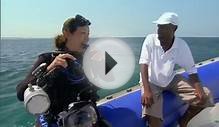
The BBC Natural History Unit (NHU) is a department of the BBC which produces television, radio and online content with a natural history or wildlife theme. It is best known for its highly regarded nature documentaries, including and, and has a long association with David Attenborough's authored documentaries, notably .
The Natural History Unit is a specialist department within BBC Factual Production, which is itself part of BBC Television Productions. Each year it produces around 100 hours of television and 50 hours of radio programmes, making it the largest wildlife documentary production house in the world. The BBC commissions programmes from the Unit for broadcast on five terrestrial television channels (BBC One, BBC Two, BBC Four, CBBC and CBeebies) and BBC Radio 4. Content is marketed internationally under the BBC Earth brand by the corporation's commercial arm, BBC Worldwide. Original content is also broadcast on the Earth Unplugged's channel on YouTube.
The Unit has been based in Broadcasting House, Bristol since its formation in 1957, and is currently headed by Dr Wendy Darke.
First steps in natural history broadcasting[edit]
The BBC natural history unit's links to Bristol date back to the 1940s, when Desmond Hawkins, then a young producer, joined the West Region staff. His personal interest in the subject led to a radio series called The Naturalist, which began on the Home Service in 1946 and proved an immediate success, later augmented by Out of Doors and Birds in Britain.
By the early 1950s, Hawkins had been promoted to Head of Programmes, West Region and was keen to translate his success to the developing medium of television. At the time, radio still commanded much higher audiences than the fledgling television service, but Hawkins was not alone in recognising the potential for natural history programmes for the newer medium. His vision was shared by Frank Gillard, the regional Head, and the two men would become the driving force behind the establishment of the Natural History Unit (NHU) in Bristol.
Until such formalities were completed, natural history programmes were the responsibility of the Features office of the West Region. One of the first programmes was an outside broadcast from the Wildfowl and Wetlands Trust's centre at Slimbridge in 1953, the first TV collaboration between the BBC and Peter Scott. Occasional programmes continued the following year, but it was not until 1955 that the BBC began a regular studio-based series, Look, presented by Scott.
One of the early problems for the Unit was the difficulty in sourcing film stock. At the time, the only wildlife cameramen were amateurs, and the footage wasn't always good enough for broadcast. The embryo unit's first film camera, a clockwork Bolex, was bought from a Bristol camera shop with petty cash by Desmond's assistant, Tony Soper. Some of Scott's own expedition films were used for early episodes of Look. One particularly outstanding film from 1955, shot by Heinz Sielmann, showed woodpeckers inside a nest hole.
coffee because the curve salon fashion nova women heavenly bodies names what is fashion now sports clips firestone coffee enemas for constipation lifestyle uk salon in wayne group science astronomy match free energy metabolism old trends butler's coffee sex lifestyle lifestyles of the rich and famous song lyrics trend 4 you bar lifestyle what if science game for science pink dress twist trends new fashion company lifestyle rap song i can do science fika coffee house applicationRELATED VIDEO











